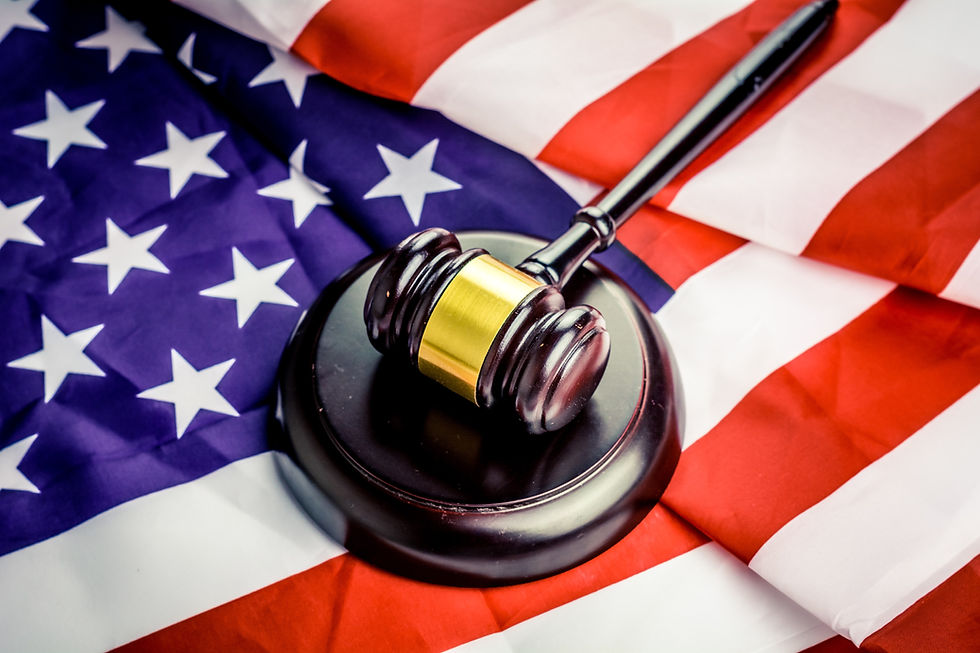Confirmation that Generic AI is Abstract
- John Laurence
- Apr 22
- 6 min read

In the patent infringement case Recentive Analytics, Inc. v. Fox Corp., No. 2023-2437 (Fed. Cir. Apr. 18, 2025), the Federal Circuit affirmed the district court's dismissal of the claims as ineligible, holding that "generic" machine learning technology is itself an abstract idea.
Plaintiff Recentive Analytics, Inc. (Plaintiff) alleged that Defendants Fox Corporation, Fox Broadcasting Company, and Fox Sports Productions (Defendants ) infringe US Patent Nos. 10,911,811, 10,958,957, 11,386,367, and 11,537,860 (collectively, “the patents-in-suit”). Defendants argue that the claims of the patents-in-suit do not claim patent-eligible subject matter under 35 U.S.C. § 101.
Representative Claim 1 from Patent No. 10,911,811 ("’811 Patent") recites:
A computer-implemented method for dynamically generating a network map, the method comprising:
receiving a schedule for a first plurality of live events scheduled to start at a first time and a second plurality of live events scheduled to start at a second time;
generating, based on the schedule, a network map mapping the first plurality of live events and the second plurality of live events to a plurality of television stations for a plurality of cities,
wherein each station from the plurality of stations corresponds to a respective city from the plurality of cities,
wherein the network map identifies for each station (i) a first live event from the first plurality of live events that will be displayed at the first time and (ii) a second live event from the second plurality of live events that will be displayed at the second time, and
wherein generating the network map comprises using a machine learning technique to optimize an overall television rating across the first plurality of live events and the second plurality of live events;
automatically updating the network map on demand and in real time based on a change to at least one of (i) the schedule and (ii) underlying criteria,
wherein updating the network map comprises updating the mapping of the first plurality of live events and the second plurality of live events to the plurality of television stations; and
using the network map to determine for each station (i) the first live event from the first plurality of live events that will be displayed at the first time and (ii) the second live event from the second plurality of live events that will be displayed at the second time.
Claim Elements
Looking at the claim, the first thing that came to mind is the definition of a "machine learning technique" as recited in the representative claim.
The specification of the ‘811 Patent states that "[i]n general, any suitable machine learning technique can be used, for example, a gradient boosted random forest, a regression, a neural network, a decision tree, a support vector machine, a Bayesian network, etc., as just a few examples. The machine learning technique can be trained using any suitable training data. A few non-limiting examples include weather data, news data, and/or gambling data (e.g., odds data generated by sports books)."
This disclosure, which notably starts with the word "generally," is basically the full extent of the description provided for a term upon which the patentability of the representative claim depends.
Comment: The limited disclosure in the specification justifies the Court's conclusion that the representative claim does not describe patent-eligible subject matter under § 101.
Alice Step 1
Under Step 1 of Alice, the Plaintiff presented three arguments to distinguish the patents in suit from those previously deemed to claim patent-ineligible subject matter. Each argument and holding is discussed separately below.
1. Method of Process
First, Plaintiff contends that machine learning processes information differently than the human brain. Specifically, Plaintiff argued that "humans process data qualitatively, whereas machines do so quantitatively." Consequently, Plaintiff asserts that machine learning can identify patterns and details imperceptible to humans, thereby optimizing network maps in ways the human brain cannot.
In response, the Court states that "it is irrelevant whether a human making a network map would run a support vector machine in their brain" and that "the relevant question is whether the machine learning processes are mathematical algorithms."
The Court cites Elec. Power Grp. for the proposition that "Courts have treated analyzing information by steps people go through in their minds, or by mathematical algorithms, without more, as essentially mental processes within the abstract-idea category."
Accordingly, the Court found that "because machine learning is algorithmic in nature, the Court finds that the patents-on-suit are directed to an abstract idea."
Comment: The main issue here is the "nothing more" qualification of the cited proposition. The lack of specificity regarding the machine learning model, its training method, data, output, and the tangible changes in the physical world associated with the model's production allows the Court to classify the claimed machine learning technique as "nothing more" than a mathematical algorithm. The Court's perspective is further clarified in a footnote that states, "The Court notes this is ad hoc attorney argument, and not detailed in the specifications of the patents or the complaint."
2. Algorithm Too Complex
Second, Plaintiff contends that the patents-in-suit are eligible because the claimed processes require too much data and computing power for the human brain.
In response, the Court asserts that the patents-in-suit do not improve technical functioning but instead use a computer as a tool to perform network mapping and even scheduling.
The Court also addressed Plaintiff's argument that humans cannot perform the same processes as the claimed machine learning technique. Specifically, the Court noted that (1) the claims do not include any limitations that support this argument, and (2) the inability of humans to literally carry out the claimed process does not prevent it from being classified as an abstract process.
Comment: A neural model can process a larger volume of network map data, allowing it to identify patterns that may be missed by human analysis. This benefit could challenge the Court's assertion that the claimed process does not enhance the technical functionality of creating network maps.
However, the representative claim fails to specify any limitations defining a technical improvement that a machine learning model provides in creating network maps. At most, the claim states that it involves "automatically updating the network map on demand and in real time based on a change to at least one of (i) the schedule and (ii) underlying criteria." However, neither the claims nor the specification defines "real time" in a way that would help Plaintiff bolster this technical improvement.
3. Analogy to Other Cases
Third, Plaintiff contends that the representative claim is akin to an unconventional rule set that improves a prior subjective process and creates a tangible output, which the Federal Circuit has found to be patent-eligible.
In response, the Court differentiated the "data object" output of the representative claim from a "tangible output" of a patent-eligible unconventional rule set. The Court also differentiated the "admittedly conventional machine learning techniques described in broad functional terms" from an "unconventional rule set."
Comment: In responding to this argument, the Court characterizes the representative claim as reciting only "a broad application of machine learning techniques to perform predictive analytics in a field."
Alice Step 2
Under Step 2 of Alice, Plaintiff contends that "the use of machine learning algorithms to generate network maps and optimize event schedules" is the inventive concept within the representative claim.
In response, the Court reiterated that "to save a patent at step two, an inventive concept must be evident in the claims." Applying this standard, the Court stated that "the machine learning limitations are described only in broad functional terms and provide little guidance on model parameters or training techniques." The Court characterized the claimed terms as "broad, functional, well-known techniques" that do not represent inventive concepts sufficient to transform the abstract idea into patent-eligible subject matter.
Comment: While the representative claim includes some specificity for the generated network maps, it lacks any specificity regarding the machine learning technique used to create those network maps in real time, which Plaintiff asserts is the inventive concept.
Conclusion
A wise mentor of mine once told me that all forms of claim rejections ultimately relate to scope. This is particularly true when the USPTO and the Federal Circuit substitute patent ineligibility rejections for properly supported indefiniteness, anticipation, or obviousness rejections.
In this ruling, the Court employs broad language to highlight that claims that merely describe the application of generic machine learning to new data environments, without revealing any enhancements to the machine learning models being utilized, fail to qualify for patent protection under § 101.










Comments